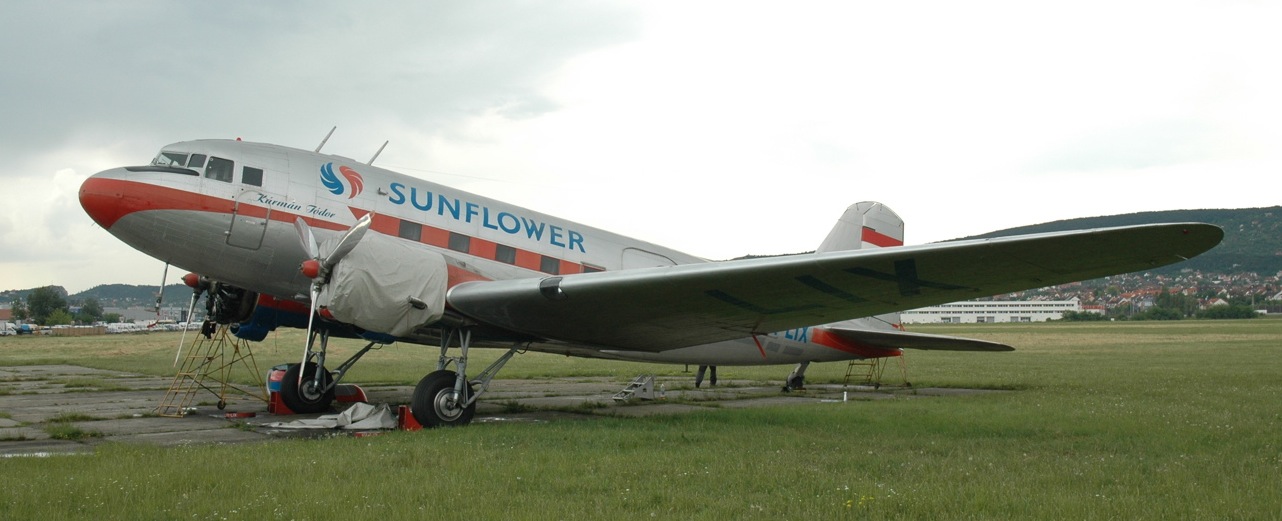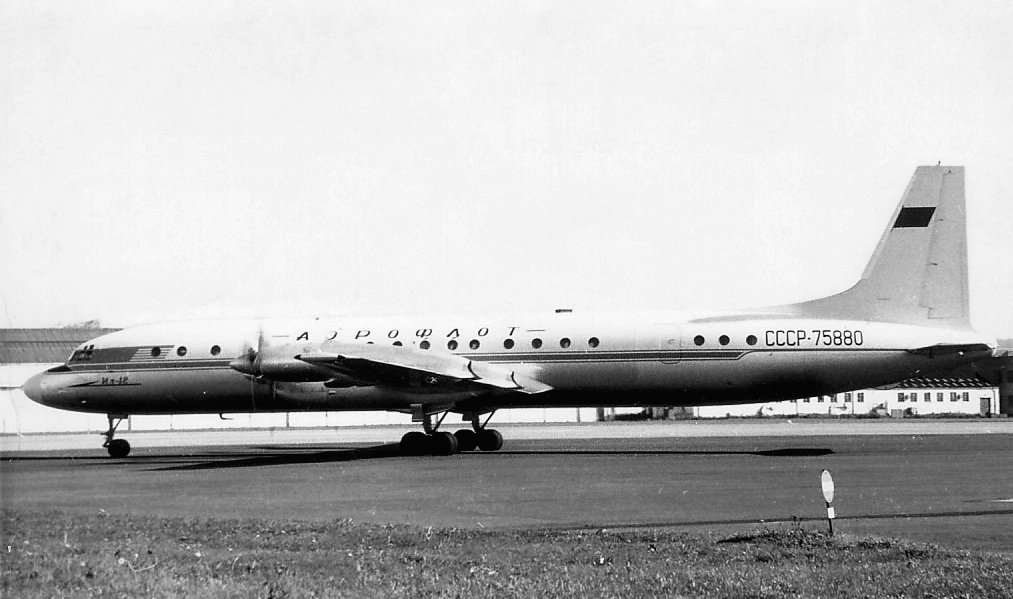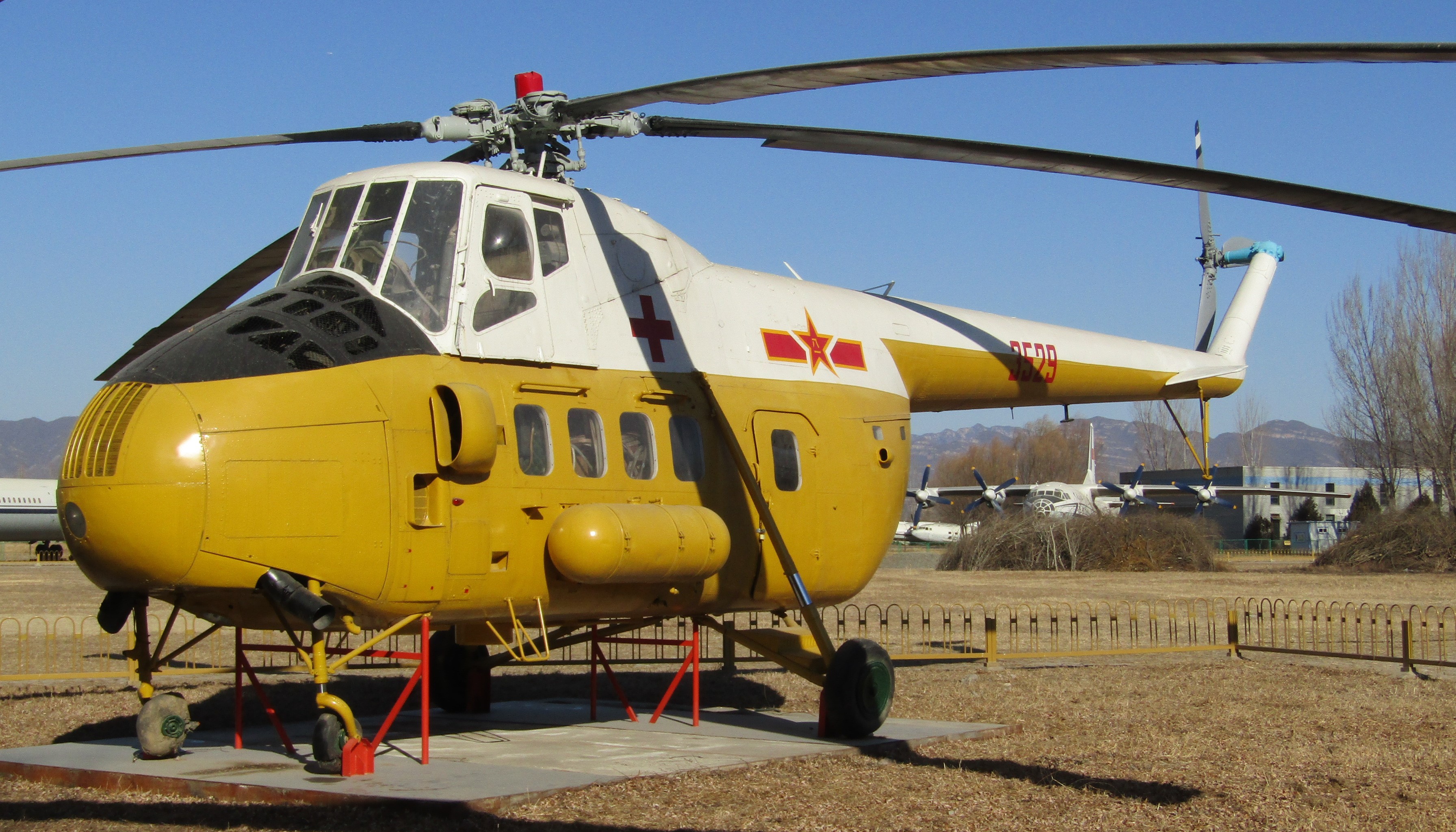|
Chinese Aviation Museum
The Chinese Aviation Museum (), sometimes referred to as the China Aviation Museum and the Datangshan Aviation Museum (due to its location adjacent to the mountain of the same name), is an aviation museum in Changping District, Beijing, China. The museum was first opened to the public on 11 November 1989, to celebrate the 40th anniversary of the founding of the People's Liberation Army Air Force. The museum is located north of Beijing city. Part of the museum is located inside a cave in the side of Datangshan Mountain. The cavern was originally part of the tunnels and underground bunker system of Shahezhen Airbase, and is 586 metres (1,905 ft) long by 11 metres (36 ft) high by 40 metres (130 ft) wide. The road leading to the museum is actually also used as a taxiway between the base and bunker system. Collection There are more than 200 aircraft on display, with an emphasis on the Korean War and the Cold War. The collection includes many unique machines, i ... [...More Info...] [...Related Items...] OR: [Wikipedia] [Google] [Baidu] |
Datangshan
Datangshan () is the name of a hill in the Changping District of Beijing, People's Republic of China, China. Transportation * N 6th Ring Road * Beijing Metro Changping Line Attractions It is the site of China's largest aviation museum, the China Aviation Museum. * Jiuhua Resort and Convention Centre * Xiaotangshan Hot Springs Landforms of Beijing Changping District Hills of China {{Beijing-geo-stub ... [...More Info...] [...Related Items...] OR: [Wikipedia] [Google] [Baidu] |
Aérospatiale Alouette III
The Aérospatiale Alouette III (, ''Lark''; company designations SA 316 and SA 319) is a single-engine, light utility helicopter developed by France, French aircraft company Sud Aviation. During its production life, it proved to be a relatively popular rotorcraft; including multiple Licensed production, licensed manufacturers, more than 2,000 units were built. The Alouette III was developed as an enlarged derivative of the earlier and highly successful Aérospatiale Alouette II, Alouette II. Sharing many elements with its predecessor while offering an extra pair of seats and other refinements, it quickly became a commercial success amongst both civil and military customers. Further variants were also developed; amongst these was a high-altitude derivative, designated as the Aérospatiale SA 315B Lama, SA 315B Lama, which entered operational service during July 1971. The Alouette III was principally manufactured by Aérospatiale; the type was also built under licence by Hindustan A ... [...More Info...] [...Related Items...] OR: [Wikipedia] [Google] [Baidu] |
Lisunov Li-2
The Lisunov Li-2 (NATO reporting name: Cab), originally designated PS-84, was a license-built Soviet-version of the Douglas DC-3. It was produced by Factory #84 in Khimki, Moscow-Khimki and, after evacuation in 1941, at Tashkent Aviation Production Association, TAPO in Tashkent. The project was directed by aeronautical engineer Boris Lisunov, Boris Pavlovich Lisunov. Design and development The Soviet Union received its first Douglas DC-2, DC-2 in 1935. A total of 18 DC-3s had been ordered on 11 April 1936, and the government of the USSR purchased 21 DC-3s for operation by Aeroflot before World War II. A production license was awarded to the government of the USSR on 15 July 1936. Lisunov spent two years at the Douglas Aircraft Company, between November 1936 and April 1939 translating the design. One of the engineers who accompanied him to Douglas was Vladimir Mikhailovich Myasishchev. Design work and production were undertaken at State Aviation Factory 84 in Khimki (now a ... [...More Info...] [...Related Items...] OR: [Wikipedia] [Google] [Baidu] |
Lavochkin La-11
The Lavochkin La-11 (NATO reporting name Fang) was an early post-World War II Soviet long-range piston-engined fighter aircraft. The design was essentially that of a Lavochkin La-9 with additional fuel tanks and the deletion of one of the four 23 mm Nudelman-Suranov NS-23 cannons. Like the La-9, the La-11 was designed to be a low to medium-altitude general-purpose fighter, although the additional fuel tanks were added with the intent of employing the La-11 in the escort fighter role. In reality, the La-11 would go on to serve almost exclusively as an interceptor, with the majority of its engagements during the Korean War seeing it pitted against bomber and transport aircraft. While an improvement over earlier aircraft, the La-9 and La-11 retained the poor high-altitude performance that was common among many Soviet piston-engined airframes, with the La-11 enjoying only a 20 kph (12 mph) advantage over the Boeing B-29 Superfortress at the latter’s cruising alt ... [...More Info...] [...Related Items...] OR: [Wikipedia] [Google] [Baidu] |
Ilyushin Il-2 Shturmovik
The Ilyushin Il-2 (Russian: Илью́шин Ил-2) is a ground-attack plane that was produced by the Soviet Union in large numbers during the Second World War. The word ''shturmovík'' (Cyrillic: штурмовик), the generic Russian term for a ground-attack aircraft, became a synecdoche for the Il-2 in English sources, where it is commonly rendered Shturmovik, StormovikStapfer, 1995 and Sturmovik.Rastrenin, 2008 To Il-2 pilots, the aircraft was known by the diminutive "Ilyusha". To the soldiers on the ground, it was called the "Hunchback", the "Flying Tank" or the "Flying Infantryman". Its postwar NATO reporting name was Bark.Gunston 1995, p. 106. During the war, 36,183 units of the Il-2 were produced, and in combination with its successor, the Ilyushin Il-10, a total of 42,330Jane's 1989, p. 529. were built, making it the single most produced military aircraft design in aviation history, as well as one of the most produced piloted aircraft in history along with the A ... [...More Info...] [...Related Items...] OR: [Wikipedia] [Google] [Baidu] |
Ilyushin Il-18
The Ilyushin Il-18 (russian: Илью́шин Ил-18; NATO reporting name: Coot) is a large turboprop airliner that first flew in 1957 and became one of the best known and most durable Soviet aircraft of its era. The Il-18 was one of the world's principal airliners for several decades and was widely exported. Due to the aircraft's airframe durability, many examples achieved over 45,000 flight hours and the type remains operational in both military and (to a lesser extent) civilian capacities. The Il-18's successor was the long range Il-62 jet airliner. Design and development Two Soviet aircraft shared the designation Ilyushin Il-18. The first Il-18 was a propeller-driven airliner of 1946 but after a year of test flights that programme was abandoned. In the early 1950s with a need to replace older designs and increase the size of the Soviet civil transport fleet, a Soviet Council of Ministers directive was issued on 30 December 1955 to the chief designers Kuznetsov and Ivchenko ... [...More Info...] [...Related Items...] OR: [Wikipedia] [Google] [Baidu] |
Hawker Siddeley Trident
The Hawker Siddeley HS-121 Trident (originally the de Havilland DH.121 and briefly the Airco DH.121) is a British airliner produced by Hawker Siddeley. In 1957, de Havilland proposed its DH.121 trijet design to a British European Airways (BEA) request. By 1960, de Havilland had been acquired by Hawker Siddeley. The Trident's maiden flight happened on 9 January 1962, and it was introduced on 1 April 1964, two months after its main competitor, the Boeing 727. By the end of the programme in 1978, 117 Tridents had been produced. The Trident was withdrawn from service in 1995. The jetliner is powered by three rear-mounted Rolls-Royce Spey low-bypass turbofans, it has a low swept wing and a T-tail. Advanced avionics allowed it to be the first airliner to make a blind landing in revenue service in 1965. The initial Trident 1/2 could seat 101-115 passengers over up to . The Trident 3 was stretched by to seat 180 over , and had an additional RB.162 booster engine in the tail. ... [...More Info...] [...Related Items...] OR: [Wikipedia] [Google] [Baidu] |
Harbin/CHDRI Z-6
The Harbin/CHDRI Z-6, (Z - ''Zhishengji'' - vertical take-off aircraft), is a Chinese helicopter development based on the Harbin Z-5, itself a licence-built / reverse engineered Mil Mi-4. A limited production run was terminated after performance was found to be inferior to its Z-5 progenitor (sources vary from 6 to 15 completed out of orders for 100). Design and development Through the Z-5 project the Chinese obtained valuable knowledge and experience in helicopter design and development. The Z-6 is a turboshaft powered development of the piston engine powered Z-5, the first Chinese designed turboshaft helicopter. The major difference is that the piston engine is replaced by a Dongan WZ-5 turboshaft engine, mounted above the cabin forward of the main gearbox. Development began in 1966 at the Harbin Aircraft Manufacturing Corporation (HAMC), but two years later development was moved to the newly formed Chinese Helicopter Design Research Institute (CHDRI), with HAMC still respo ... [...More Info...] [...Related Items...] OR: [Wikipedia] [Google] [Baidu] |
Harbin Z-5
The Harbin Z-5 (''Zhishengji'' – helicopter) is a Chinese variant of the Soviet Mil Mi-4 piston powered helicopter. Before its discontinuation from service, it was produced in Harbin, China. The USSR provided China with Mi-4 blueprints just a few years before the Sino-Soviet split in 1958. Maiden flight was in 1958 and mass production started in the mid-1960s. China has produced a number of unique variants through this model, and the Z-5 was employed by the PLA, PLAAF and PLANAF in large numbers as reserve forces. A total of 558 Z-5 were built. A few Z-5 helicopters were modified to carry machine-guns and rocket pods. During the Chinese-Western rapprochement, one Z-5 was refitted with a Pratt & Whitney Canada PT6T-6 "Twin Pac" turbo-shaft engine in 1979. Some sources refer to this as the Z-6, but this variant was discontinued after its first model. Variants ;Z-5 : Military transport helicopter. ;Z-5 assault helicopter: Some Z-5 were converted to carry rocket pods on outriggers ... [...More Info...] [...Related Items...] OR: [Wikipedia] [Google] [Baidu] |
Fairchild PT-19
The Fairchild PT-19 (company designation Fairchild M62) is an American monoplane primary trainer aircraft that served with the United States Army Air Forces, RAF and RCAF during World War II. Designed by Fairchild Aircraft, it was a contemporary of the Kaydet biplane trainer, and was used by the USAAF during Primary Flying Training. As with other USAAF trainers of the period, the PT-19 had multiple designations based on the powerplant installed. Design and development The PT-19 series was developed from the Fairchild M-62 when the USAAC first ordered the aircraft in 1940 as part of its expansion program. The cantilever low-wing monoplane with fixed landing gear and tailwheel design was based on a two-place, tandem-seat, open cockpit arrangement. The simple but rugged construction included a fabric-covered welded steel tube fuselage. The remainder of the aircraft used plywood construction, with a plywood-sheathed center section, outer wing panels and tail assembly. The use o ... [...More Info...] [...Related Items...] OR: [Wikipedia] [Google] [Baidu] |
ORBIS International
Orbis International is an international non-profit non-governmental organization (NGO) dedicated to saving sight worldwide. Its programs focus on the prevention of blindness and the treatment of blinding eye diseases in developing countries through hands-on training, public health education, advocacy and local partnerships. Since 1982, Orbis capacity-building programs have enhanced the skills of 325,000 eye care personnel and provided medical and optical treatment to more than 23.3 million people in 92 countries. Orbis is a registered 501(c)(3) tax-deductible non-profit charity in the United States. It is rated 4 stars on Charity Navigator and is a Guidestar Gold Participant. It is headquartered in New York, with offices in Toronto, London, Dublin, Hong Kong, Macau, Shanghai, Singapore, Cape Town and Addis Ababa. Orbis' programs emphasise skills, training and self-sufficiency. The organisation spends approximately a year planning and coordinating with partner hospitals and local ... [...More Info...] [...Related Items...] OR: [Wikipedia] [Google] [Baidu] |
Douglas DC-8
The Douglas DC-8 (sometimes McDonnell Douglas DC-8) is a long-range narrow-body airliner built by the American Douglas Aircraft Company. After losing the May 1954 US Air Force tanker competition to the Boeing KC-135, Douglas announced in July 1955 its derived jetliner project. In October 1955, Pan Am made the first order along with the competing Boeing 707, and many other airlines followed. The first DC-8 was rolled out in Long Beach Airport on April 9, 1958, and flew for the first time on May 30. FAA certification was achieved in August 1959 and the DC-8 entered service with Delta Air Lines on September 18. The six-abreast, low wing airliner was a four-engined jet aircraft with initial variants being long. The DC-8-10 was powered by Pratt & Whitney JT3C turbojets and had a MTOW, the DC-8-20 had more powerful JT4A turbojets for a MTOW. The intercontinental models had more fuel capacity and up to MTOW, powered by JT4As for the Series 30 and by Rolls-Royce Conway turbof ... [...More Info...] [...Related Items...] OR: [Wikipedia] [Google] [Baidu] |
.jpg)


.jpg)




